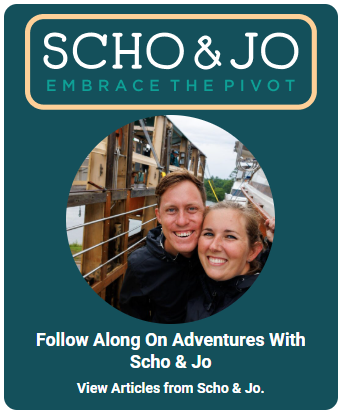Because boaters are faced with doing double duty to prepare for Hurricane Irma, battening down both boat and home, any and all Hurricane hacks, apps and short cuts are appreciated.
Here is our guide. If you have a hurricane hack not on our list please send it to us via news@waterwayguide.com and we will add it to the ever-expanding list.
Apps to download to your smartphone:
If you choose a walkie-talkie app like Zello, be aware that, while it’s useful if cell phone networks are overwhelmed, you still need cell service in order for it to operate. For IOS click to download the FREE app. Click here to download for Android. IN the case of Harvey, the Cajun Navy set up their own channel to coordinate rescue efforts. Here’s a link to a tutorial on how to use Zello.

NOAA basic and the specialized Hurricane upgrade for $1.99., both are available for IOS and Android.
FEMA has an app with customizable alerts, click for the free app, available for iOS and Android.
Anchoring:
See our exclusive guide on loads for ground tackle by Rudy and Jill Sechez, authors of Anchoring: A Ground Tackler’s Apprentice.
Here’s how residents in Nassau in The Bahamas are working that problem today.

HeadKnowles Facebook Group member Chavez Turnquest, on Long Island in The Bahamas, furnished these images. He tells Waterway Guide in an interview via Facebook Chat, “Everyone has there boats already put away on the northern part of the island in Stella Maris marina. And awaiting for the hurricane to pass.”

Waterway Guide’s News asked Rudy and Jill took a look at these preparations to see if there is anything they can add to enhance the security of these vessels. They suggested a review of some anti-chafe measures for this, and other configurations.
Here's the excerpt from Anchoring: A Ground Tackler’s Apprentice, they provided:
Most of the techniques to combat “chafe” will fall into one of four categories: reduce, replace, cover, or transfer. Any one technique can be used individually or in combination with another, regardless of the category in which it is placed.
REDUCE- Lessen opportunities for a rope to chafe, be cut, melt or lose strength:
1. Keep leads as fair as possible.
2. Make angles and bends as large as possible.
3. Make any radius over which a rope may lie as large as possible.
4. Avoid sharp edges, and round over the ones that cannot be avoided.
5. Keep surfaces smooth.
6. Keep the rope from touching anything.
7. If a rope must touch, with the exception of belaying points, make surfaces that it touches roll, such as leading the line through a block or over a roller.
8. If the surface cannot roll, surface the item that the rope touches with a slippery material, such as starboard, Teflon, Delrin, or other High Density Molecular Plastic (HDMP) with well eased edges. Wood can also be used; being sacrificial, the wood will wear instead of the rope.
9. Reduce friction by lubricating surfaces that the rope touches with water, candle wax, synthetic grease, petroleum jelly or other lubricant that is compatible with the material from which the rope is manufactured, renewing the lubricant as needed.
10. Place cleats as close as possible to chocks or hawse holes in order to minimize the amount of “stretch length” available within this interval.
11. Form a loop in the end of the rope, so that when doubled over a cleat, or around other belaying points, both legs of this loop will extend beyond the point of chafe, allowing the load to be shared by both legs, thus reducing stretch which might otherwise encourage the rope to chafe.
12. To keep chafe off the rode on coral, rocks, engine blocks, or other objects lying on the bottom to a minimum, attach and position a float, adjusting its pendant for length, such that the rode rides above any obstruction. Be aware that lifting the rode off of the seabed can affect the rode-to-bottom angle at the anchor. As the wind speed rises, if maintaining a low rode-to-bottom angle is critical, you may need to dispense with this technique and, if necessary, relocate the vessel so that the rode is not at risk for rubbing on any of these items resting on the bottom.
REPLACE- Substitute a more chafe-resistant material for one that is more prone to chafe:
· Hard laid rope resists chafe better than soft laid rope.
· 3-strand, 8-plait (brait), and 12-braid rope resists chafe better than double braid rope.
· Polyester (Dacron) rope resists chafe better than Nylon rope.
Riding it out aboard?
Most say, “Nope.”
Every official source on record has, in no uncertain terms, told boaters in the path of Irma to evacuate.
Here is a checklist from the website Boatsafe.com.
· Tie down or remove loose objects.
· Wrap lines around sail covers to prevent ballooning.
· Stay, if possible, on a secure mooring so that the boat can turn into the wind. Mooring all round puts a great deal of strain on the boat, however, if there is no swinging room it can't be helped, much of what follows still applies.
· ALL connections to the mooring should go through a swivel. Lines without a swivel that have become twisted can break very easily under strain. I have seen it happen.
· When securing the boat, secure each line to a separate cleat/sampson post. DO NOT secure all lines to the same point on the boat. If the mast is stepped below on the keel, use the mast as well if necessary. DON'T if stepped on deck.
· Add chain to the mooring/boat connection, with a loop in the chain with a nylon spring attached to the boat to take the shock of snatching together with a swivel.
· Add 2 nylon rope lines from the mooring to the boat, making a total of 3 lines to the mooring.
· Make sure that the lines from the boat to the mooring are longer by at least 50% than is normal, more if considered appropriate, to allow for any tidal surge.
· Check all hatches and port holes and dorade boxes for potential leaks.
· Check the engine for easy starting in an emergency.
· Stock up with plenty of fresh food and water and fuel.
· Secure or remove all loose items in the tender.
· Secure the tender BEHIND the main boat by at least 2 separate lines to the main boat.
· STAY ON BOARD with radio, barograph, weather fax all 'ON' for as much weather information as possible. Weather reports by the authorities are not always as up to date as one's own observations.
· Keep a constant watch on lines for chafe, leaks on board, any small things that arise that could become BIG if not watched and attended to.
· Check bilge pumps, hand and electric, making sure all are working.
· Put out the fenders all round the sides of the boat, you never know when the other person's UNATTENDED boat is going to cause havoc.
· Check all unusual sounds immediately when you hear them.
· All this assumes that your mooring is in a good location, protected from wave action and, as much as possible, from the wind. AVOID high hills and mountains within the immediate proximity of the mooring area, they cause mini cyclones locally that are often worse than the typhoon.
· Have a friend ashore, if you wish, to check in with at intervals; that friend knowing before hand what to do in an emergency.
· DO NOT rely on Insurance companies or the authorities to get you out of the jam that you are in. Be self-reliant, that is the principal behind 'messing around in boats' in whatever manner one chooses, and should be born in mind at all times.
NOTE: Unless there is absolutely no alternative, Waterway Guide strongly urges all liveaboards to follow the evacuation notices put out by the USCG (U.S. Coast Guard) and FEMA (Federal Emergency Management Administration).
Once the boat is secured
Here are some hurricane hacks courtesy of CBS News and others, for weathering the storm if you plan to shelter at home.
Keeping your cool
Fill Ziplock bags full of water and freeze them standing upright

Fill Ziploc bags three-quarters full of water and stack them standing upright in your freezer. This will help keep your freezer cold longer in case of a power outage, and it will also give you a good supply of fresh drinking water if needed. Remember, you should stockpile at least 1 gallon of water per person/animal per day for at least three days.
Turn your washing machine into a cooler: Use your washing machine to store items that need to keep cool.

Before the storm hits, fill up your washing machine with ice, put items inside that you want to keep chilled and close the lid to keep them cool. Don't worry about what to do when the ice starts to melt — the machine is designed to drain water.
Water water everywhere and you still need some to flush the toilets
Fill your bathtub full of water: Florida resident Karyl Niemi suggests using a silicone pot cover to seal your drain.

This is an old standby for emergency preparations: fill your bathtub up with water before the storm hits. The water can be used to flush toilets, clean dishes or it can be purified and used as extra drinking water. If you have time, buy bags to line the tub before filling it to keep water clean for drinking, the National Weather Service recommends. On Facebook, Florida resident Karyl Niemi suggests using a silicone pot cover to seal your drain.
Pet Set

Put pieces of sod into a kiddie pool to make a potty area for your dog: A dog training facility in Florida found a creative way to bring the outdoors into your home when you're stuck inside during a storm.
If you have to shelter at home and you have a pet, expect your animal will need to remain indoors until you're told it's safe to do otherwise. That means your pet will need a safe place to relieve itself while inside. Every Dog Has Its Day, a dog training facility in Orlando, Florida, recommends putting sod in a kiddie pool and putting it in your garage (if it isn't likely to flood). That way, you'll have "a safe place for your dogs to potty during the storm," the group wrote in a Facebook post that has been shared nearly 25,000 times.
Makeshift flashlight
Use a water bottle and a flashlight to make a lantern: Tape a flashlight to the bottom of a plastic water bottle to create a makeshift lantern.

If you don't go camping, you'll probably never use a lantern again. So, don't buy one. There's an easier solution: Tape a flashlight to the underside of a water bottle — or water jug — to help illuminate a room if the power goes out. This hack will also work with your smartphone. Simply place a plastic bottle over the flashlight on your smartphone for the same effect.
Crayons as candles is another emergency lighting option.

Embrace your dishwasher: Place items in your dishwasher to help keep them dry.
If there are pictures or other small items you'd like to keep safe, try storing them in plastic bags and placing them inside your dishwasher. But first, turn off the water supply to the unit. "It's sealed to keep water in, so it should do just fine keeping it out too," CBS affiliate WTSP in Florida reports. "Just make sure all your dishes are taken out before loading up important documents or belongings." Plastic bins, washing machines, dryers and safe boxes can also be used to help preserve valuables.
However, it's important to note none of these options are guaranteed to be 100 percent waterproof. If you have to evacuate your home, make sure you bring all important documents — your passport, copies of insurance policies, a form of state issued ID, etc. — with you.
Once the storm hits: If you are in a life-threatening situation and you need rescue, call 911 first, then your local emergency operation center (EOC). If you are unable to connect with your local emergency services, then call the Coast Guard.
SECTOR SAN JUAN COMMAND CENTER
(787) 289-2041
SECTOR MIAMI COMMAND CENTER
(305) 535-4477
SECTOR ST. PETERSBURG COMMAND CENTER
(305) 535-4477
SECTOR JACKSONVILLE COMMAND CENTER
(904) 714-7500












